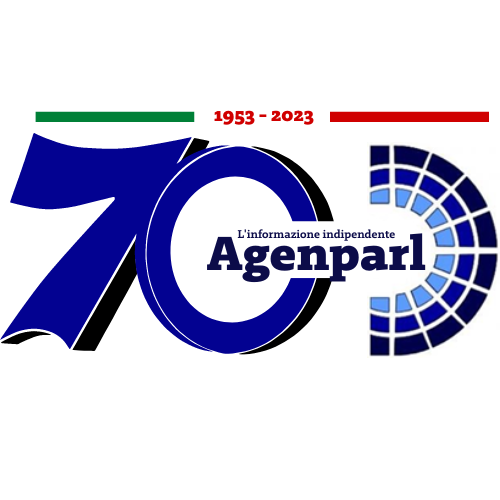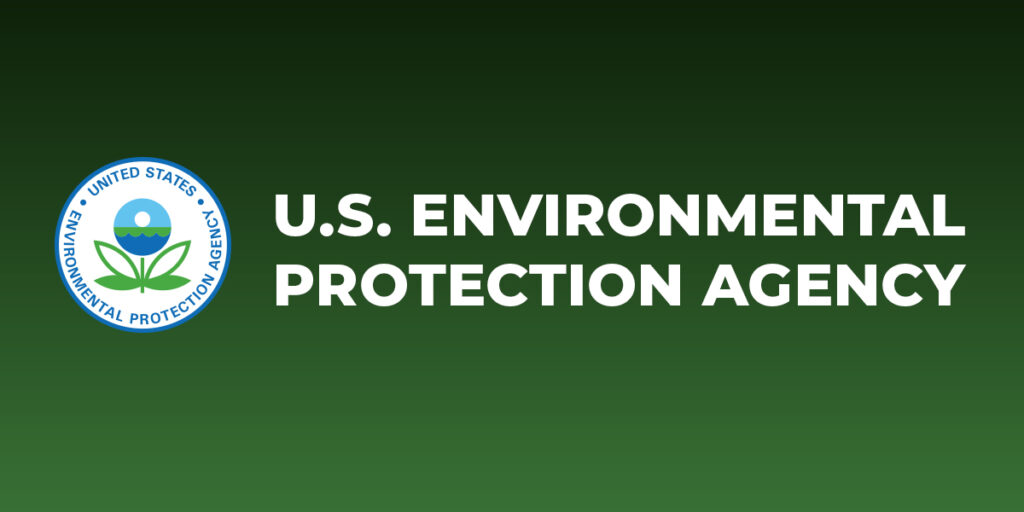 (AGENPARL) - Roma, 8 Febbraio 2024
(AGENPARL) - Roma, 8 Febbraio 2024(AGENPARL) – gio 08 febbraio 2024 Issued: Feb 8, 2024 (1:01pm EST)
If you wish to unsubscribe please do so
here: http://url6130.epa.mediaroom.com/ls/click?upn=-2BroytcZInNRyuFbAvAoN5aMEQDHIx2RtQl0jT-2FwLgZHafJKm-2F7NYrsKNAZH88rhd98aG2o5sSGIX8iVgGgXwOczi8WNFU0a7GLvUAvQ8R0RGX5bAZ9mjh1NYnKAGekGpxSPI_mLoYh0p4AWg4foFr5HgrZ1QioQ33bLwdnQ-2BsYGKFX9mApcfdQmv0-2Bvkdf9kq-2BlYjTe1fXbcc3JbFFyWYxEfphboO6YWFNhRGVwf-2F4H-2BVRsx6jL2VFJrZwBCrdTTiZMOzSAuXXavxYSGs6QgOcfUWiKapLlwp-2Fe2mh3LZr9ldIBGJKN7OkIzYtPg4jLh5V1lFDE1ki3tkibfDs2HYQKm-2FxkChM-2F2TTq214Zom7ZSa9GR3ucxcGFAkLcUcKeOyBsQ81xigA7z7HJ5heg1l0uMFiw-3D-3D
EPA Outlines Implementation Approaches for Endangered Species Act Pesticide
Policies
U.S. Environmental Protection Agency, Region 7 – 11201 Renner Blvd., Lenexa,
KS 66219
Iowa, Kansas, Missouri, Nebraska, and Nine Tribal Nations
LENEXA, KAN. (FEB. 8, 2024) – The U.S. Environmental Protection Agency (EPA)
announced the latest steps to incorporate stakeholder feedback and
collaboration with federal partners, ensuring the Agency’s work to protect
endangered species from pesticides is practical, flexible, and supports the
agricultural community. Assistant Administrator Michal Freedhoff described
these steps in a speech to the National Association of State Departments of
Agriculture.
“Protecting endangered species and ensuring we have a safe and abundant food
supply can go hand in hand,” said Assistant Administrator for the Office of
Chemical Safety and Pollution Prevention Michal Freedhoff. “The steps
we’re announcing today are designed to meet this dual obligation of
providing the agricultural community with the tools and flexibility they need
while ensuring pesticides aren’t harming endangered species.”
When registering pesticides under the Federal Insecticide, Fungicide, and
Rodenticide Act (FIFRA), EPA must also comply with the Endangered Species Act
(ESA) to ensure pesticides do not harm endangered species or their critical
habitats. For most of EPA’s history, the Agency has almost never met these
duties for its FIFRA decisions. This has resulted in considerable litigation
against the Agency, creating uncertainty for farmers and other pesticide
users, unnecessary expenses and inefficiencies for EPA, and delays in the
protection of endangered species.
In April 2022, EPA released its ESA Workplan, which establishes strategies and
actions to adopt those protections while ensuring farmers, public health
authorities, and others have access to pesticides. In addition to other
actions, EPA proposed a vulnerable species pilot and draft herbicide strategy
in 2023. Stakeholders have expressed concerns related to the implementability
of these strategies and urged EPA to make needed adjustments before finalizing
the approaches.
Today, EPA announced its plans to address key concerns, expand its partnership
with the U.S. Department of Agriculture (USDA) and seek additional stakeholder
engagement in the coming months as it continues to address this decades-old
challenge of protecting endangered species from pesticide exposure.
Improved Species Maps
In June 2023, EPA announced draft mitigations for 27 species that are part of
the Agency’s Vulnerable Species Pilot project, an effort to protect species
that are particularly vulnerable to pesticides. EPA received feedback that
some of the maps included areas that endangered species do not live in, and
that the areas in which pesticide mitigations would be required under the
Pilot were thus overly broad.
Today, EPA announced that it will not implement the Vulnerable Species Pilot
protections for a species until a more refined map of its habitat is
developed. EPA is also announcing that it is working with the U.S. Fish and
Wildlife Service (FWS), USDA, the University of Georgia, and other
stakeholders to develop maps that better reflect where these species actually
live and where protections from pesticides are needed. In April, EPA plans to
hold a workshop to facilitate and prioritize the development of these maps,
and EPA will also develop guidelines that the public can use to develop and
submit refined maps for hundreds of other endangered species.
Credit for using Voluntary USDA Conservation Practices
USDA’s Natural Resources Conservation Service (NRCS) helps farmers carry out
voluntary practices that improve environmental health and quality, many of
which also reduce pesticide drift and runoff, which could benefit endangered
species. Yesterday, EPA signed an MOU with USDA describing how EPA can include
NRCS conservation practices on pesticide labels as one way growers who
voluntarily perform those practices can use them to help fulfill pesticide
label requirements. EPA and USDA are planning meetings and workshops in the
coming months to further discuss the MOU and gain input from producers about
mitigation options that may count toward fulfilling pesticide label
requirements.
Regarding the MOU, Robert Bonnie, USDA Under Secretary for Farm Production and
Conservation, said, “Farmers who use strong conservation practices developed
by NRCS should be given credit for all of the benefits these practices
provide, including reducing the off-site movement of pesticides. NRCS’s
programs remain entirely voluntary and producers will not need NRCS approval.
Collaboration between USDA and EPA through efforts such as this MOU and
additional stakeholder conversations will help to keep safe, effective pest
management tools in farmers’ hands.”
This effort responds to suggestions received on EPA’s July 2023 draft
herbicide strategy and would also apply to other ESA initiatives. This would
provide more flexibility for growers on the type of practices they can use to
protect endangered species and ensure EPA’s proposed mitigations can
practically be implemented. For example, EPA is already considering which
mitigations, if any, are needed on land that is dry or flat or both.
Online Mitigation Menu
Currently, if EPA needs to add new mitigations to pesticide labels, the Agency
must update hundreds or thousands of paper labels every time the menu of
mitigation options is expanded – a process that can take years. EPA will
launch its first online mitigation menu that will allow the Agency to quickly
add new mitigation measures options, thus ensuring that growers can use those
new options promptly. This year, the Agency plans to release a draft online
menu for public comment, and then update that menu based on feedback later
this year.
Offsets for Endangered Species Protections
EPA is working with stakeholders to determine how to use “offsets” when
avoiding or minimizing pesticide exposure to an endangered species is
impossible or impractical. In those situations, it may be possible to offset
the impact to the species through activities like funding habitat restoration
for the species, contributing to a captive rearing project at a zoo for the
species, or other steps to conserve the species. EPA, other federal agencies,
and stakeholders are participating in a workshop later this month to discuss
how to bring offsets into EPA’s ESA-FIFRA work. This initiative should give
pesticide registrants and users more flexibility to meet label requirements to
protect endangered species, while directly contributing to recovering those
species.
Learn more about EPA’s ESA work.
# # #
Learn more about EPA Region 7
To unsubscribe or change your settings click here:
http://url6130.epa.mediaroom.com/ls/click?upn=-2BroytcZInNRyuFbAvAoN5aMEQDHIx2RtQl0jT-2FwLgZFdW2WYdzQmaasDKJ3YChU3c78Rs-2BqESCtTCRiQfEGAOCPELF7Ds-2FTT8a4iBItWy-2BNcmhkNslRAzjiEIbyBoFsJNrTbGlydOwJV4rWGbTrjyw-3D-3Dlbsh_mLoYh0p4AWg4foFr5HgrZ1QioQ33bLwdnQ-2BsYGKFX9mApcfdQmv0-2Bvkdf9kq-2BlYjTe1fXbcc3JbFFyWYxEfphboO6YWFNhRGVwf-2F4H-2BVRsw9jGTr7McV0sfnvUBnyKPSTgxR4e3wgI8KyV-2FAWSaZYXppw3-2BEXPv5ePr-2Fv5h9poLOoIXq612celOPZ4q-2BDxbB4JcVCGgB2sj-2BK9lG9GfD1Og1GjMwHW6e8iL9zbU6Hr7UoczOyKI6Fk49chpqjRzpNYpcmXH9EFb-2BvoakUoXwOg-3D-3D

